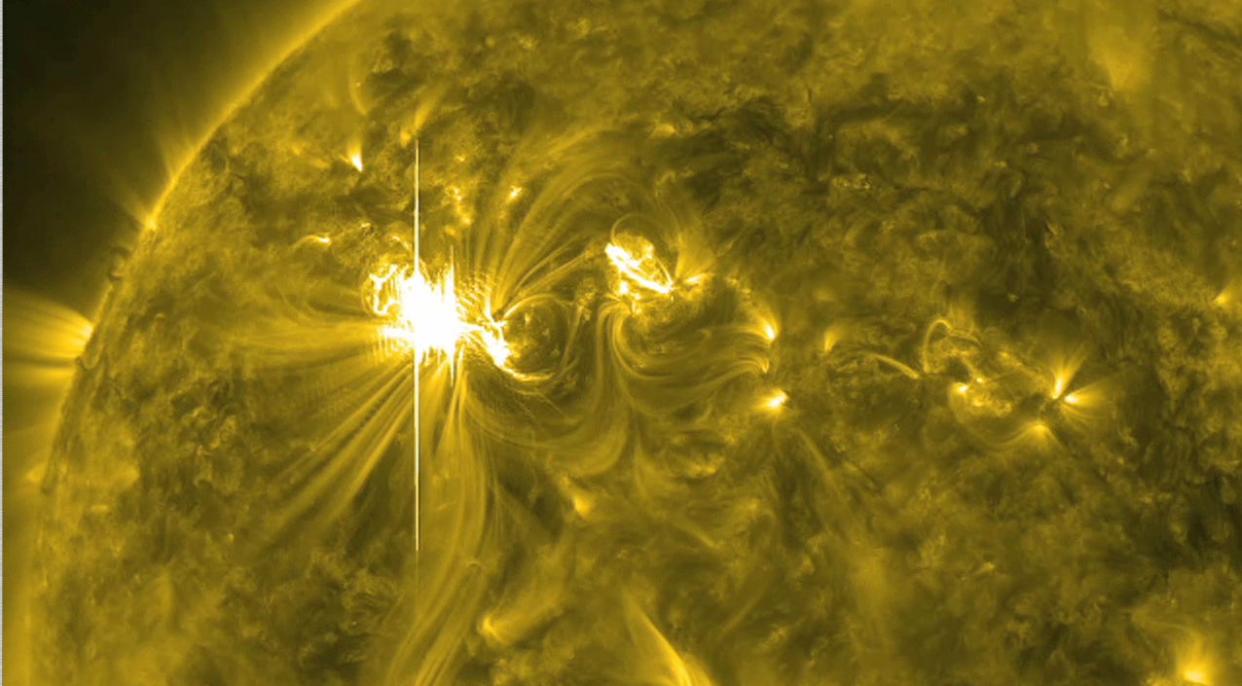Middle-aged stars experience ‘midlife crisis’ when their rotation rate slows down, says study

Middle-aged stars undergo a “midlife crisis” when they experience dramatic breaks in their activity and rotation rates, according to a new study which suggests that the Sun may be heading towards a less magnetically active future.
Astronomers have long thought the decrease in rotation rate of stars happens gradually over billions of years in a smooth and predictable manner, enabling the estimation of the age of a star from its rotation period by using a tool known stellar gyrochronology.
This slow down in rotation, caused by the escape of a steady stream of charged particles called stellar winds, also leads to altered magnetic fields and less stellar activity including fewer sunspots, flares, and outbursts, studies have shown.
However, scientists including Dibyendu Nandi from the Indian Institute of Science Education and Research (IISER) Kolkata, say this intimate relationship breaks down around a star’s middle age.
New research in #MNRAS Letters casts light on magnetic field disruption in middle-aged stars: https://t.co/uaVFNYvpff pic.twitter.com/53VkLd5P9E
— Royal Astronomical Society (@RoyalAstroSoc) July 28, 2021
In a new study, published today in the journal Monthly Notices of the Royal Astronomical Society: Letters, the researchers used dynamo models of magnetic field generation in stars to show that at about the age of the Sun, the magnetic field generation mechanism of stars suddenly becomes “sub-critical or less efficient.”
According to the scientists, a middle aged star like the Sun, can often exist in two distinct activity states – a low activity mode and an active mode.
They say switching to the low activity mode can drastically reduce angular momentum losses by magnetized stellar winds.
“This hypothesis of sub-critical magnetic dynamos of solar-like stars provides a self-consistent, unifying physical basis for a diversity of solar-stellar phenomena, such as why stars beyond their midlife do not spin down as fast as in their youth, the breakdown of stellar gyrochronology relations, and recent findings suggesting that the Sun may be transitioning to a magnetically inactive future,” Mr Nandi said in a statement.
The scientists believe the findings may help explain the existence of low activity episodes in the recent history of the Sun such as the Maunder Minimum around 1645 to 1715 when very few sunspots were observed, and also help predict the potential long-term future of our stellar neighbour.
Read More
Bezos offers Nasa $2bn for moon lander contract already awarded to SpaceX
Meteor caught on camera in Texas
Dutch teen on Blue Origin flight to space told Jeff Bezos he’s never used Amazon

 Yahoo News
Yahoo News 